Abstract
Fischer 344 rats were given the attenuated live vaccine strain of Francisella tularensis by small-particle aerosol, intranasal instillation, or intraperitoneal, intramuscular, or subcutaneous injection. All of the vaccinated rats developed subclinical infection by 3 days after exposure, which cleared by day 28. Temporal patterns and concentrations of the live vaccine strain organism within the hosts were dependent on the route of vaccination. Pathological alterations were limited to minimal lung lesions in aerosol-vaccinated rats and mild splenitis in intraperitoneally vaccinated rats. Agglutinins to live vaccine strain were detected in the serum of each vaccinated animal and in the bronchoalveolar wash fluids of 66% of the aerosol-vaccinated rats. Agglutinin activity of the vaccinated rats was associated predominantly with the immunoglobulin M class. Regardless of the route of vaccine administration, all vaccinated rats survived an aerosol challenge of 5.3 log10 cells of virulent F. tularensis, whereas all nonvaccinated rats died. Systemic infection did not occur in the vaccinated rats. Pulmonary infection was not prevented in the vaccinated rats after aerosol challenge, but proliferation of the virulent F. tularensis organisms in the lungs was significantly lower (analysis of variance, P less or equal to 0.01) than that which occurred in the control animals. These studies demonstrate the utility of the inbred Fischer 344 rat as a model host for further investigations of F. tularensis infection and its associated immune response.
Full text
PDF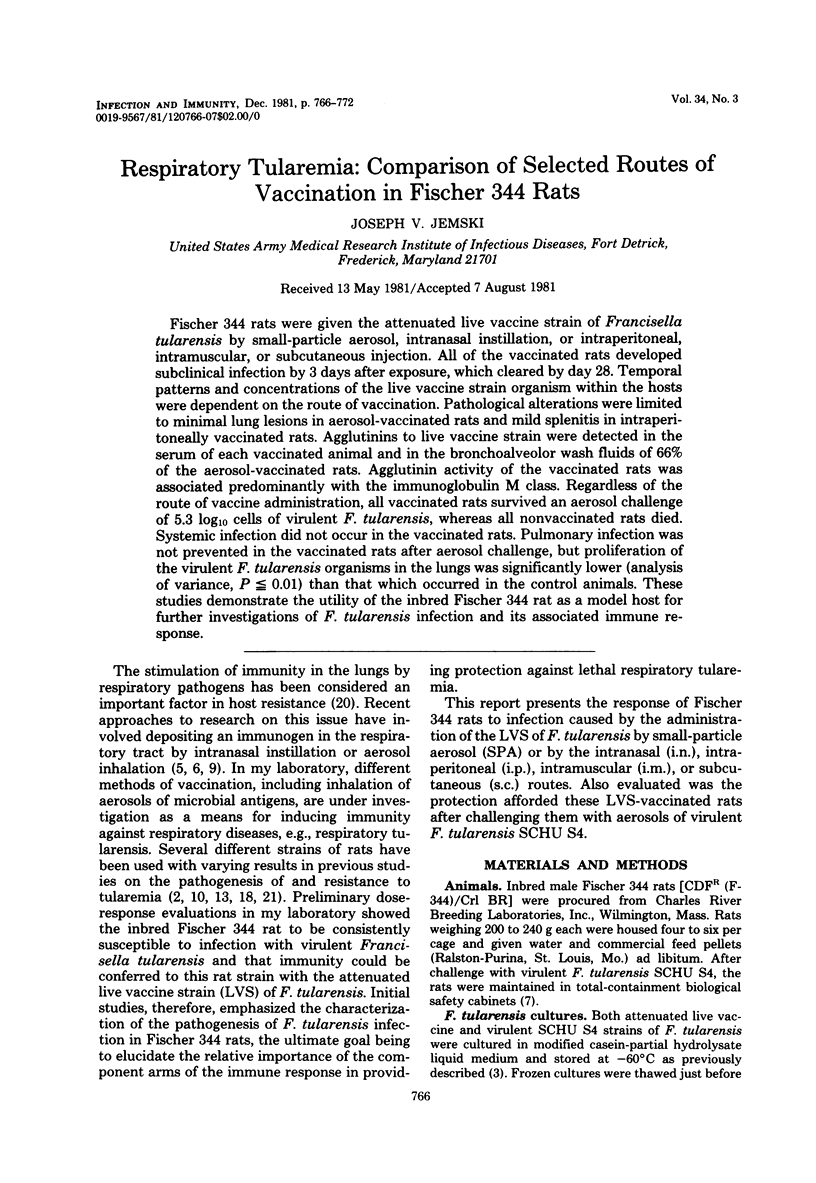
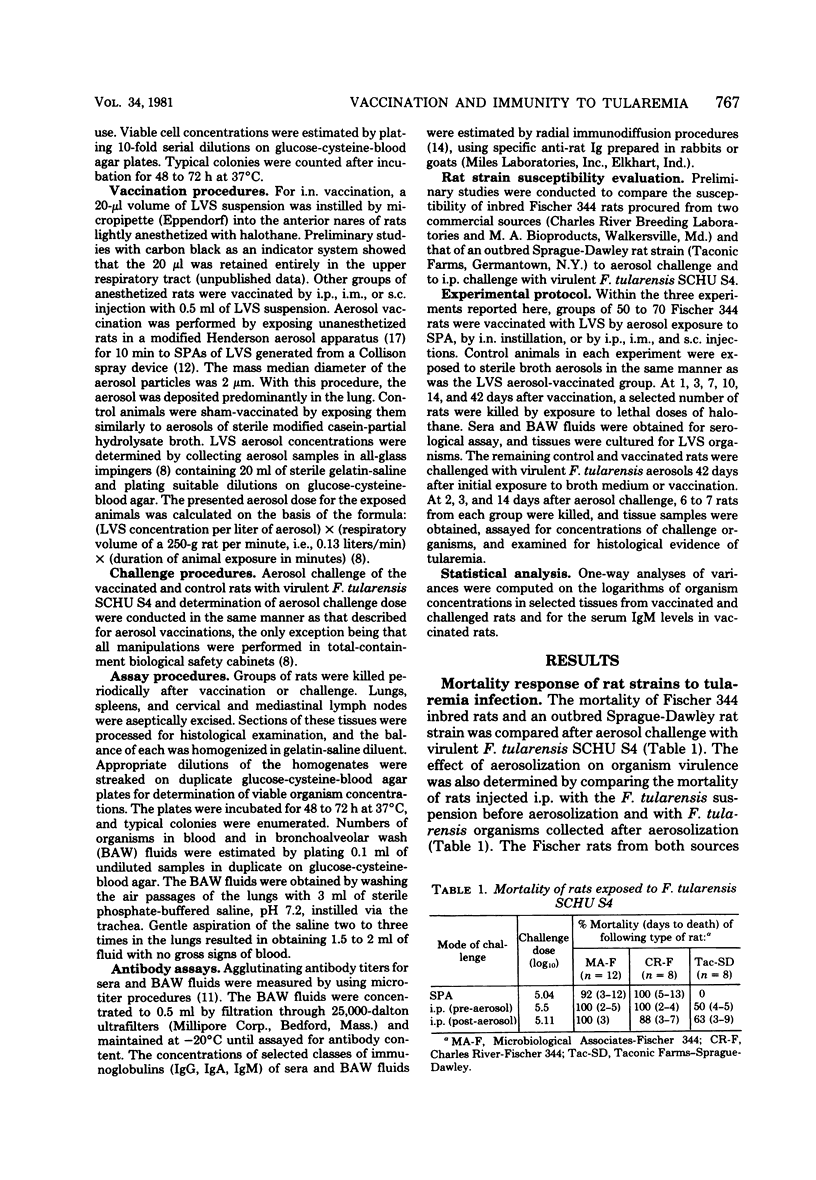

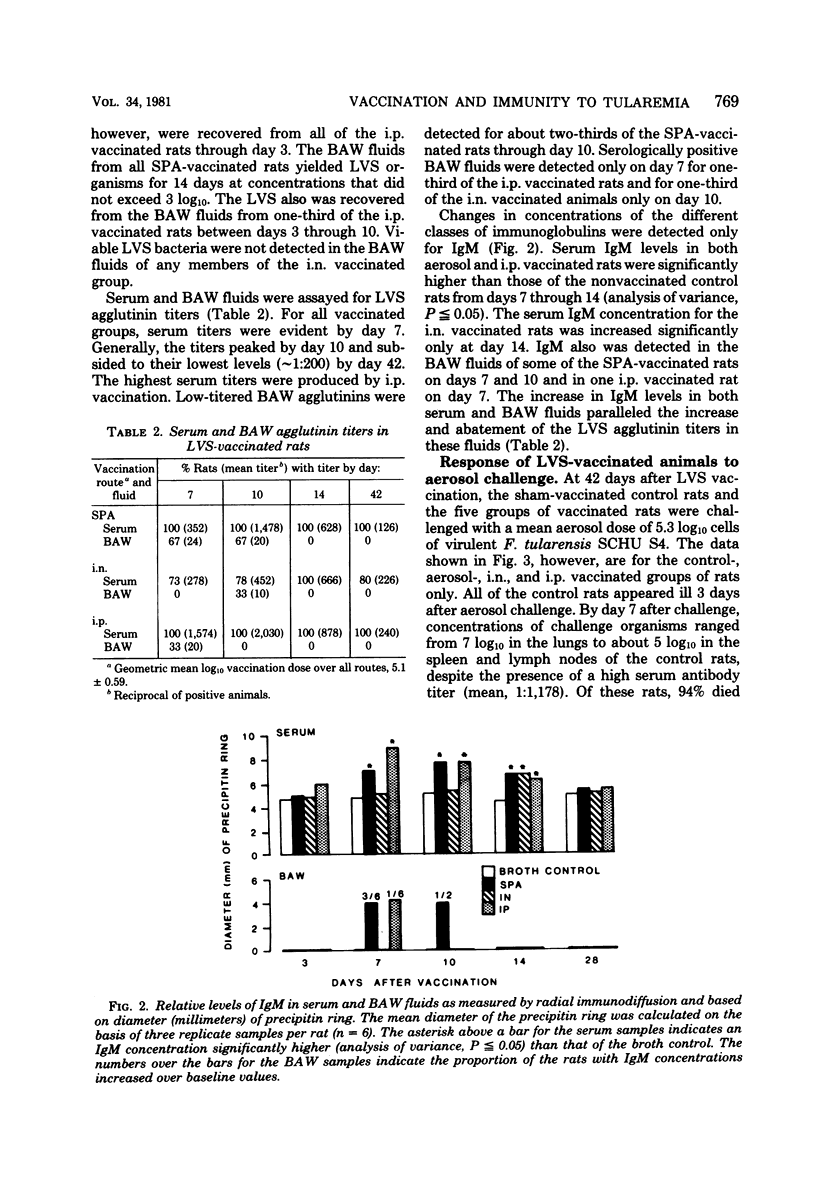
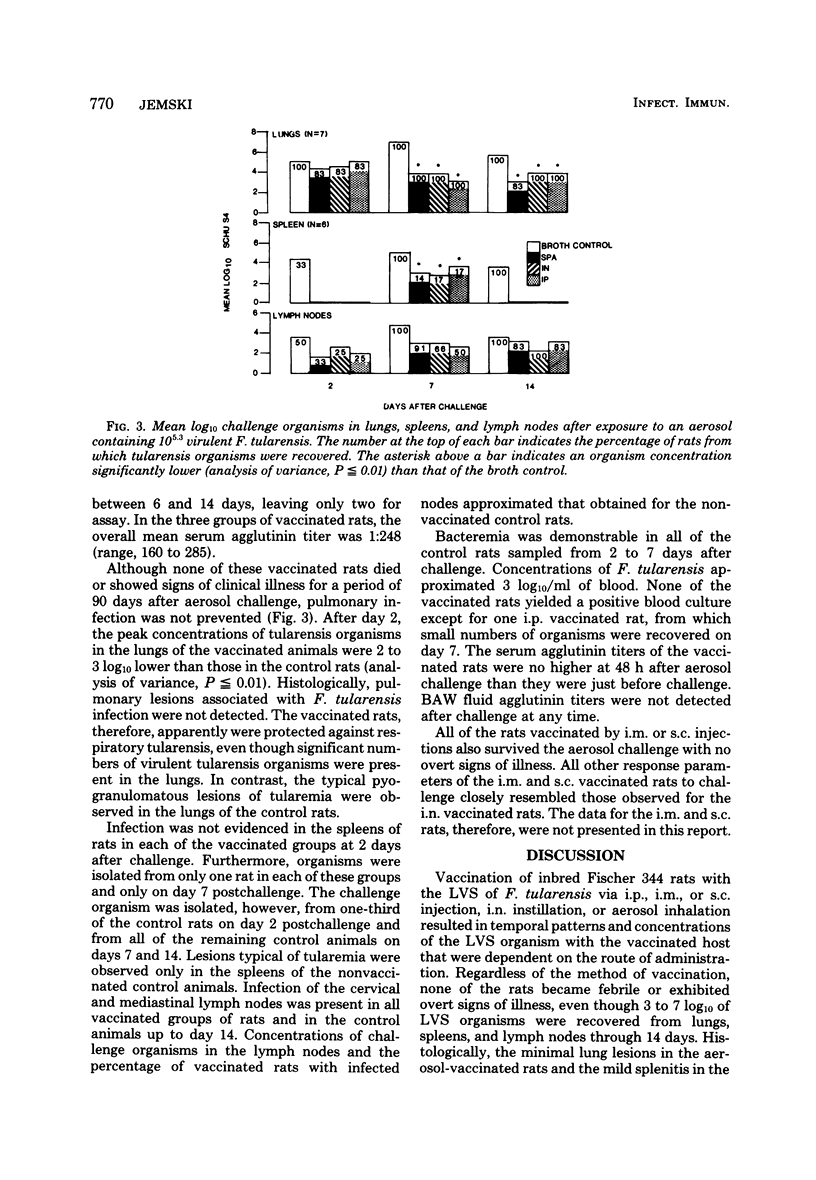
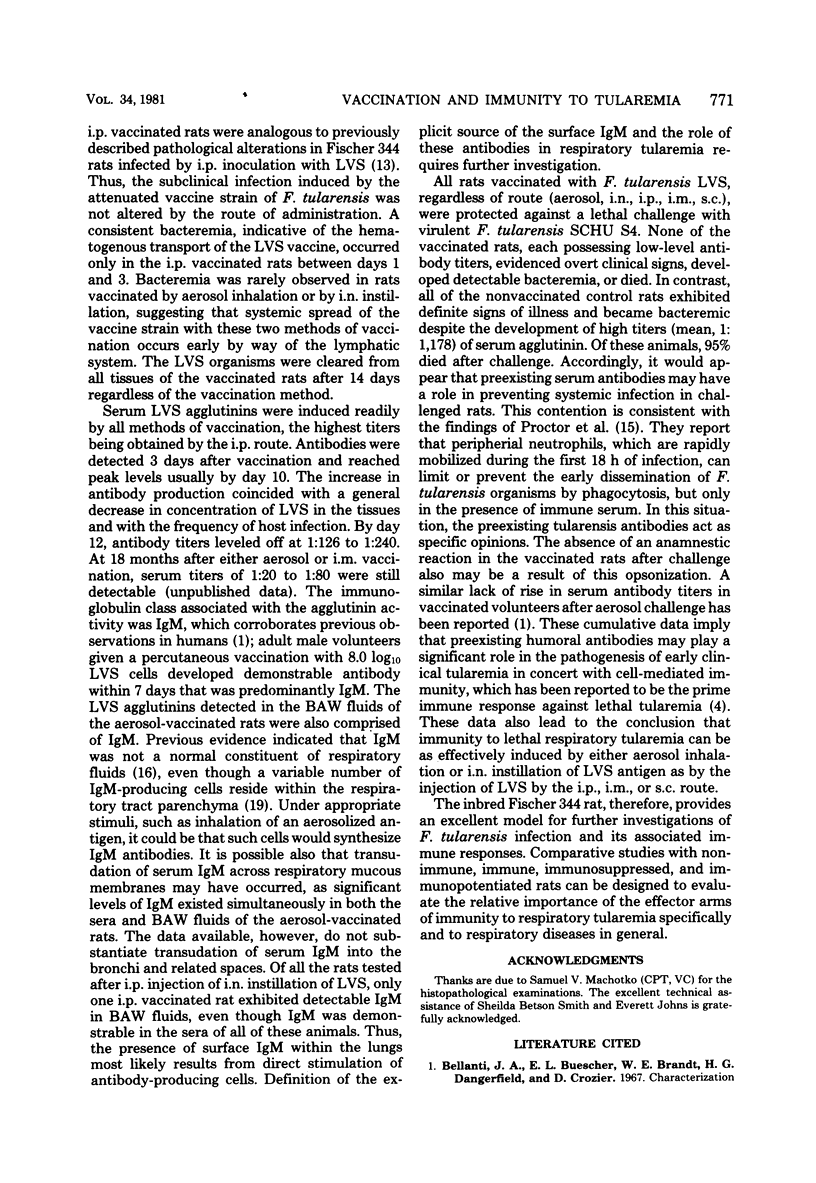
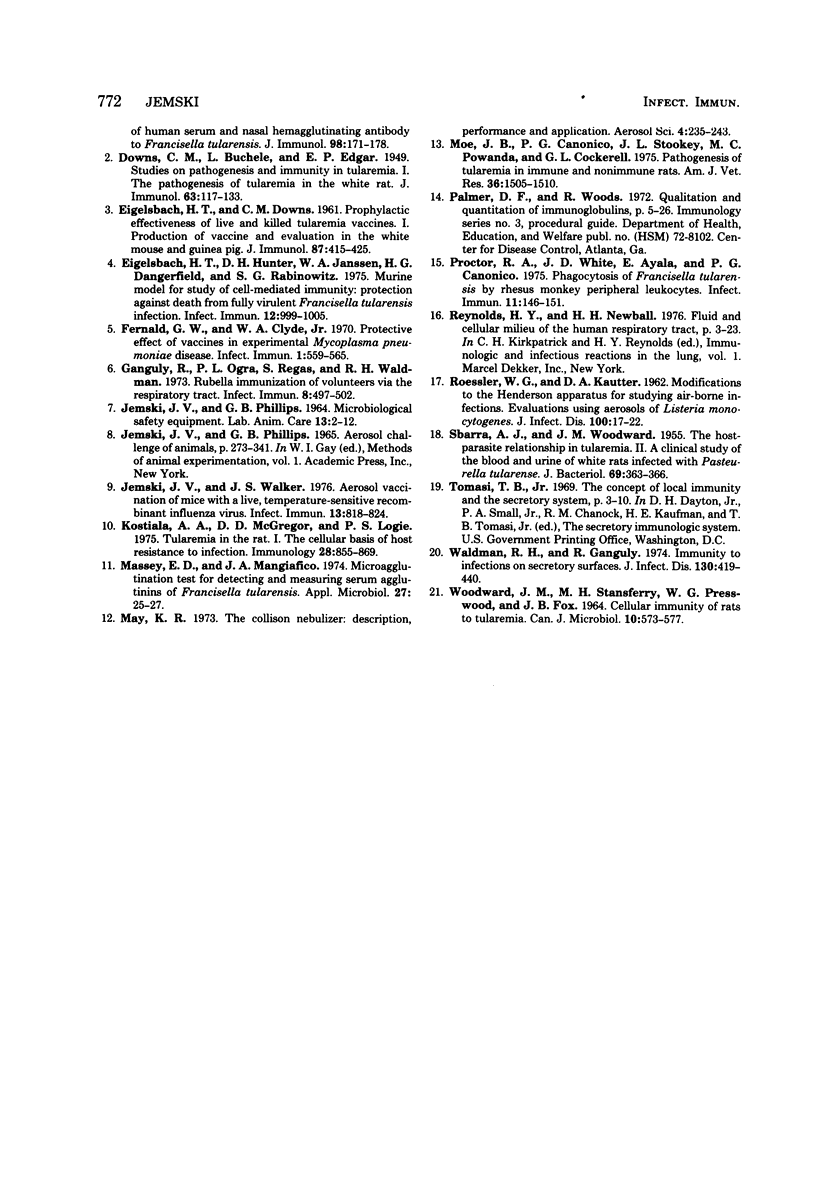
Selected References
These references are in PubMed. This may not be the complete list of references from this article.
- Bellanti J. A., Buescher E. L., Brandt W. E., Dangerfield H. G., Crozier D. Characterization of human serum and nasal hemagglutinating antibody to Francisella tularensis. J Immunol. 1967 Jan;98(1):171–178. [PubMed] [Google Scholar]
- DOWNS C. M., BUCHELE L., EDGAR E. P. Studies on pathogenesis and immunity in tularemia; the pathogenesis of tularemia in the white rat. J Immunol. 1949 Oct;63(2):117–133. [PubMed] [Google Scholar]
- EIGELSBACH H. T., DOWNS C. M. Prophylactic effectiveness of live and killed tularemia vaccines. I. Production of vaccine and evaluation in the white mouse and guinea pig. J Immunol. 1961 Oct;87:415–425. [PubMed] [Google Scholar]
- Eigelsbach H. T., Hunter D. H., Janssen W. A., Dangerfield H. G., Rabinowitz S. G. Murine model for study of cell-mediated immunity: protection against death from fully virulent Francisella tularensis infection. Infect Immun. 1975 Nov;12(5):999–1005. doi: 10.1128/iai.12.5.999-1005.1975. [DOI] [PMC free article] [PubMed] [Google Scholar]
- Fernald G. W., Clyde W. A. Protective Effect of Vaccines in Experimental Mycoplasma pneumoniae Disease. Infect Immun. 1970 Jun;1(6):559–565. doi: 10.1128/iai.1.6.559-565.1970. [DOI] [PMC free article] [PubMed] [Google Scholar]
- Ganguly R., Ogra P. L., Regas S., Waldman R. H. Rubella immunization of volunteers via the respiratory tract. Infect Immun. 1973 Oct;8(4):497–502. doi: 10.1128/iai.8.4.497-502.1973. [DOI] [PMC free article] [PubMed] [Google Scholar]
- Jemski J. V., Walker J. S. Aerosol vaccination of mice with a live, temperature- sensitive recombinant influenza virus. Infect Immun. 1976 Mar;13(3):818–824. doi: 10.1128/iai.13.3.818-824.1976. [DOI] [PMC free article] [PubMed] [Google Scholar]
- Kostiala A. A., McGregor D. D., Logie P. S. Tularaemia in the rat. I. The cellular basis on host resistance to infection. Immunology. 1975 May;28(5):855–869. [PMC free article] [PubMed] [Google Scholar]
- Massey E. D., Mangiafico J. A. Microagglutination test for detecting and measuring serum agglutinins of Francisella tularensis. Appl Microbiol. 1974 Jan;27(1):25–27. doi: 10.1128/am.27.1.25-27.1974. [DOI] [PMC free article] [PubMed] [Google Scholar]
- Moe J. B., Canonico P. G., Stookey J. L., Powanda M. C., Cockerell G. L. Pathogenesis of tularemia in immune and nonimmune rats. Am J Vet Res. 1975 Oct;36(10):1505–1510. [PubMed] [Google Scholar]
- Proctor R. A., White J. D., Ayala E., Canonico P. G. Phagocytosis of Francisella tularensis by Rhesus monkey peripheral leukocytes. Infect Immun. 1975 Jan;11(1):146–151. doi: 10.1128/iai.11.1.146-151.1975. [DOI] [PMC free article] [PubMed] [Google Scholar]
- ROESSLER W. G., KAUTTER D. A. Modifications to the Henderson apparatus for studying air-borne infections. Evaluations using aerosols of Listeria monocytogenes. J Infect Dis. 1962 Jan-Feb;110:17–22. doi: 10.1093/infdis/110.1.17. [DOI] [PubMed] [Google Scholar]
- SBARRA A. J., WOODWARD J. M. The host-parasite relationship in tularemia. II. A clinical study of the blood and urine of white rats infected with Pasteurella tularense. J Bacteriol. 1955 Mar;69(3):363–366. doi: 10.1128/jb.69.3.363-366.1955. [DOI] [PMC free article] [PubMed] [Google Scholar]
- WOODWARD J. M., STANSBERRY M. H., PRESSWOOD W. G., FOX J. B. CELLULAR IMMUNITY OF RATS TO TULAREMIA. Can J Microbiol. 1964 Aug;10:573–577. doi: 10.1139/m64-072. [DOI] [PubMed] [Google Scholar]
- Waldman R. H., Ganguly R. Immunity to infections on secretory surfaces. J Infect Dis. 1974 Oct;130(4):419–440. doi: 10.1093/infdis/130.4.419. [DOI] [PubMed] [Google Scholar]


